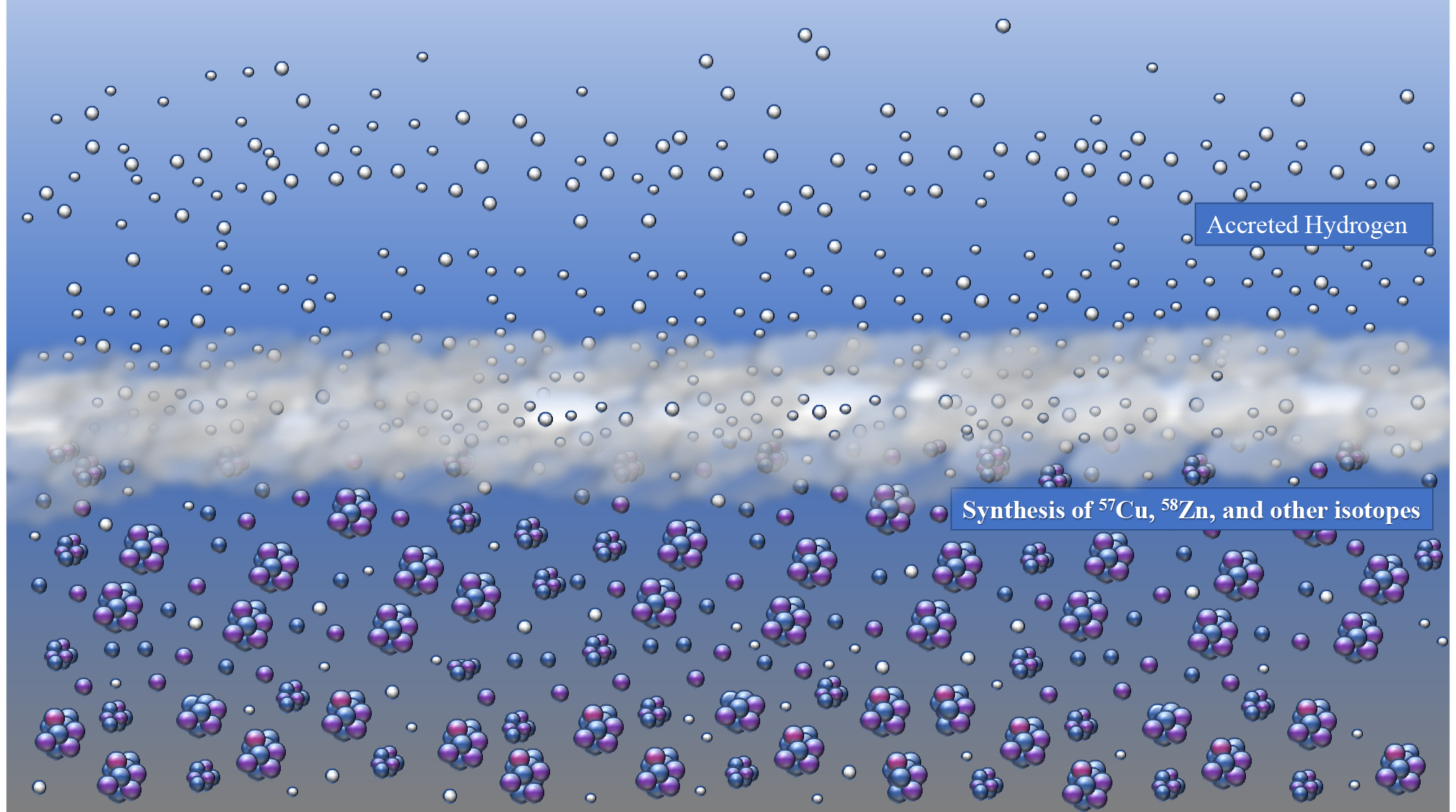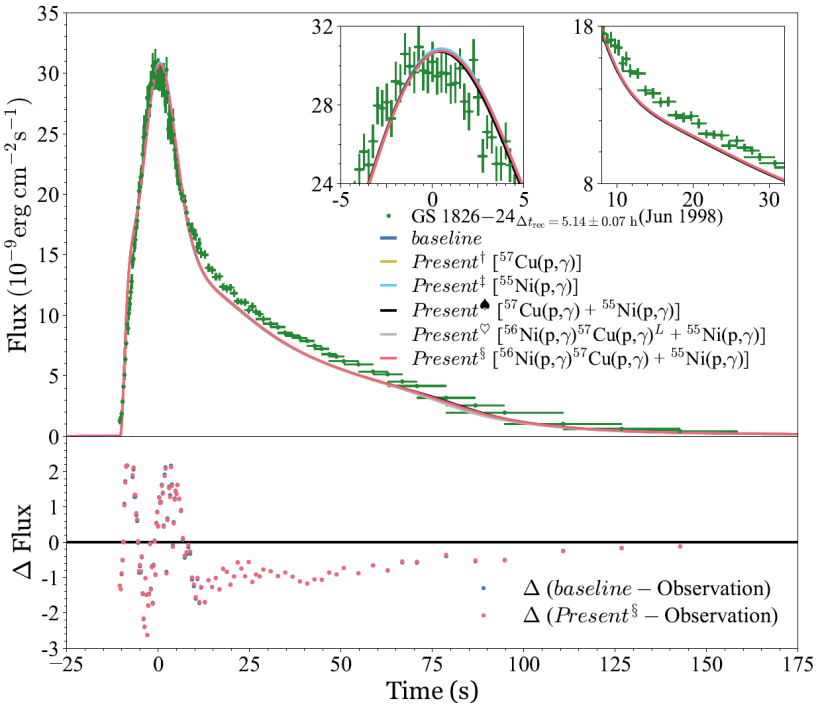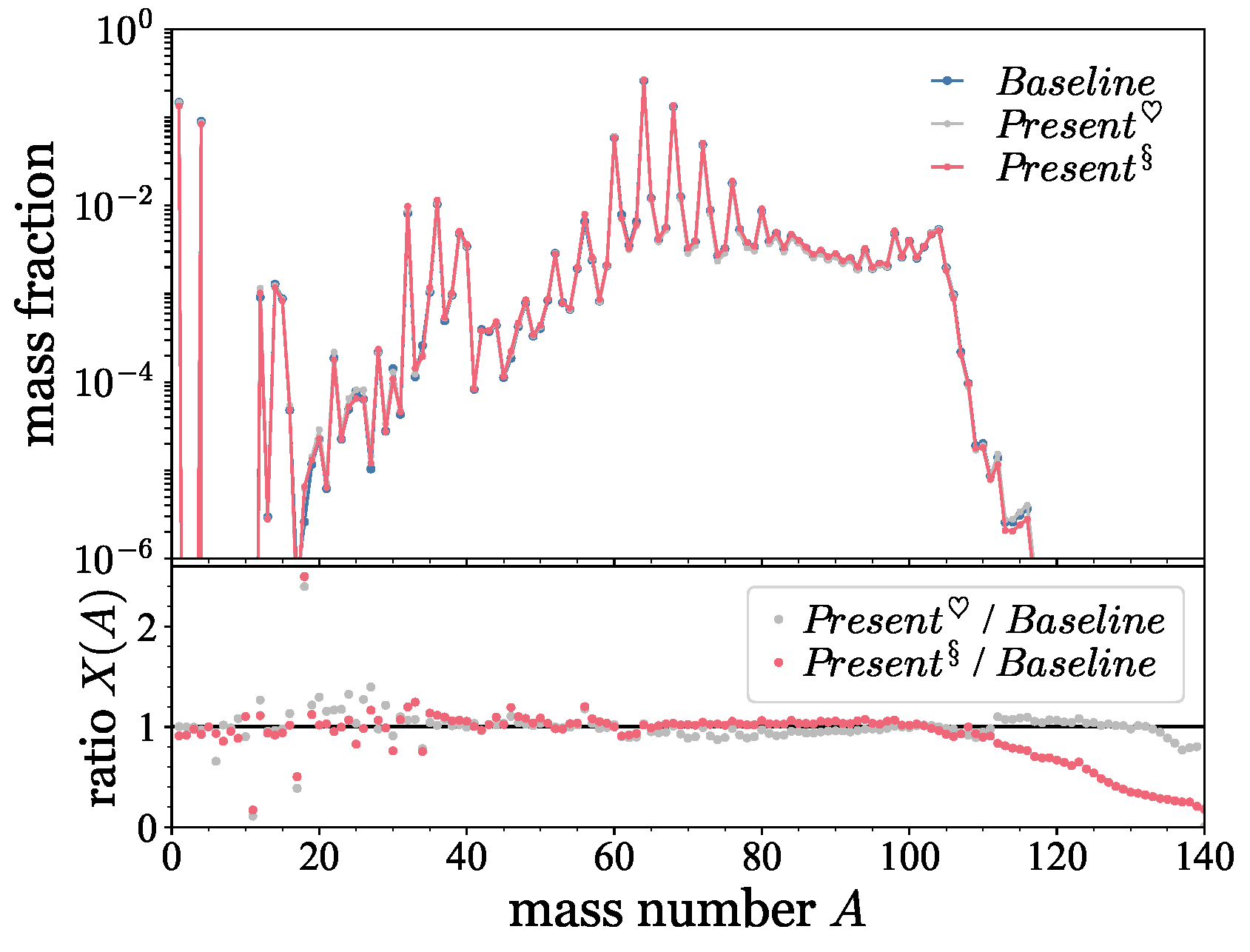New Proton Capture Reaction Rate of Copper-57 Changes Nucleosynthesis Paths in Type-I X-ray Burst
An international research team has recently developed a new proton capture reaction rate of copper-57 for the extreme astrophysical environment at the surface of neutron stars. The researchers found that the new reaction rate changes some of the most critical nucleosynthesis paths in Type-I X-ray bursts.
Published in The Astrophysical Journal, the study was conducted by the researchers at the Institute of Modern Physics of the Chinese Academy of Sciences, Monash University, the Centre d'Etudes Nucléaires de Bordeaux-Gradignan, the Joint-Institute for Nuclear Astrophysics, and RIKEN.
Since the first Type-I X-ray burst was discovered in the last century, astrophysicists are keen to understand the physics driving these bursts. This includes understanding their energy generation, the composition of burst ashes left on the neutron star surface, and perhaps even their contribution to the formation of some of the rarest chemical elements in the universe.
To build accurate models of these bursts, in addition to the macroscopic astrophysical conditions, scientists need to accurately know the nuclear reaction rates of the key nuclides. The detailed knowledge of the nuclear reaction path permits them to model the syntheses of the chemical elements.
Previous studies indicate that the proton capture reaction of copper-57 is the fifth most influential reaction affecting the periodic thermonuclear burst of the X-ray source GS 1826-24.
In the study, the research team obtained the new proton capture reaction rate of copper-57, which is as low as only 20% of the previous rate. Using a state-of-the-art Type-I X-ray burst simulation model (KEPLER code), they successfully reproduced a set of theoretical X-ray burst light curves that closely match the observed light curves of GS 1826-24 X-ray source.
Researchers found that the new proton capture reaction rate of copper-57 significantly changes the burst ash composition. The burst ash composition is an essential ingredient to the studies of superbursts that burn these ashes and of neutron star cooling.
These new results contribute to better constraining the equation of state of nuclear matter at the extreme conditions inside a neutron star, which is a key ingredient to understand gravitational waves from binary neutron star mergers and gamma-ray burst counterparts in the era of multi-messenger astronomy.

Figure 1. Artist's impression of the accreted envelope during an X-ray burst. (Image by NU Ning and LAM Yi Hua)

Figure 2. The modeled and observed periodic X-ray burst light curve of the GS 1826–24 X-ray source. The light curve generated from the new reaction rate of the proton capture on copper-57 and other updated reaction rates (red line). (Image from The Astrophysical Journal)

Figure 3. The burst ash composition at the post burst. The influence of the newly deduced reaction rate of the proton capture on copper-57 (red line). (Image from The Astrophysical Journal)
Contact :
LIU Fang
Institute of Modern Physics
Email: fangliu@impcas.ac.cn
Contact Information
Institute of Modern Physics
Email: fangliu@impcas.ac.cn



 甘公网安备 62010202000713号
甘公网安备 62010202000713号


